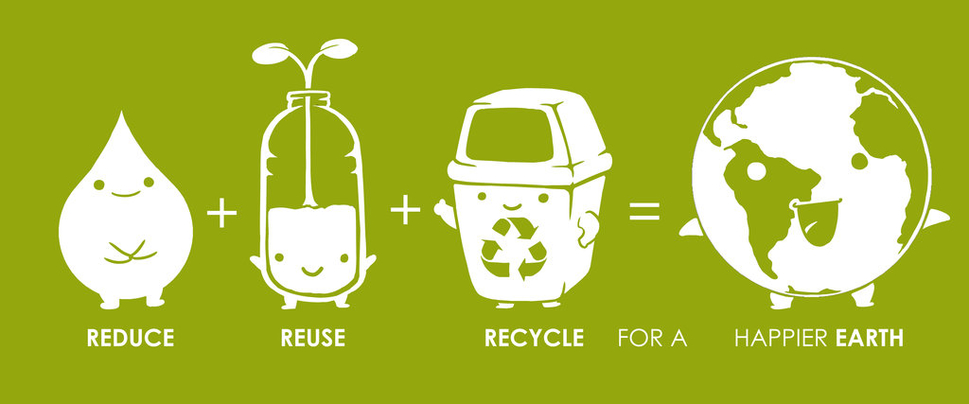“Sustainable living” is a lifestyle that uses as few resources as possible and causes the least amount of environmental damage for future generations to deal with.[1] Practitioners of sustainable living often attempt to reduce their carbon footprint by altering methods of transportation, energy consumption, and diet.[2]They aim to live in balance with the Nature and to be respectful of humanity's symbiotic relationship with the Earth's natural ecology and cycles, since they do understand that we are neither separate from, nor unaffected by, our natural surroundings.
The “Eco-friendly Lifestyle”, though, can be viewed as a trend that will soon be outdated; especially because of the numerous articles on “Going Green” and all the celebrities “advertising” their green lifestyle. However, it isn’t a trend; it is a lifestyle choice.
Do you know how your lifestyle habits affect our environment and your health? Are you aware of these simple and inexpensive solutions that, if adopted, can make a difference almost immediately? There are three key factors when thinking on going green in our houses – The 3 R’s: Reduce-Reuse-Recycle
“Reduce" means using fewer resources in the first place and it’s the most effective of the three R's. It is also, I think, the hardest because it requires a more simplified lifestyle by letting go of some modern notions, including: the bigger the better, the less the worst and convenience instead of effort. Literally, “reduce” means “make smaller or less in amount”. While talking about sustainable lifestyle it can be translated as cutting down our needs.
Simple actions that lead to great results:
- Buy only what you need. Look for things that will last: durable and well-made, but also useful and beautiful enough to please you for a long time. Moreover, before buying any product, give yourself time to think if you really need it. Think, also, about its environmental impact. How did the production of this product affect the environment and what further impacts will there be with the disposal of the product (and associated packaging materials)? In addition, don't chase the latest fashions. They will age the fastest.
- Buy products made from post-consumer recycled materials, especially toilet paper (it is made from the highest post-consumer waste content you can find -80% minimum).
- Make your own products to cut down on waste and control the materials used. From soap to toothpaste and deodorants, use natural ingredients to create your own everyday products. The same applies to household cleansers too.
- Choose electronics and appliances that are energy-efficient. Moreover, when it comes to electronics, extravagance may also pay. A super-charged computer will still run the software that comes out two years from now and a good camera will always take good quality pictures. The same applies to cars. When it comes to electronics that you are not using every day (car, camera etc.) consider of sharing them within your family or other friends.
- Shop local. Buy stuff made close to home -less energy was used transporting them to the store-and, if possible, under biological production. Avoid goods made with materials whose extraction or processing is especially destructive, such as tropical woods and most gold jewelry.
- Buy used whenever possible.
- Avoid overly packaged goods or those packaged for single use (i.e., drinks, school lunches, candy, cat and dog food, salad mixings, etc.).
- Waste less energy on lights and equipment and cut back on water use at home. Start with simple steps: change the lamps with energy-efficient ones and your toilet flush with an eco-one (the double flush function and a small urine separating bowl in the front of the toilet can save up to 80-90 % water)
- Eat less meat.
- Create a tree-free home: replace paper napkins with cloth napkins; reuse envelopes, wrapping paper and other paper materials you receive wherever possible; print your documents on once-used paper and/or bleach-free, recycled paper; use digital calendars and organizers; read books, magazines, and newspapers from your local library or online.
More tips on “Reuse” and “Recycle”, next week, on TIPS TO GO GREEN (part_2)
REFERENCES
http://www.nrdc.org/thisgreenlife/0802.asp
Winter M. (2007), Sustainable Living: For Home, Neighborhood and Community, Westsong Publishing, ISBN 0-9659000-5-3.
image source: https://www.thinglink.com/scene/633439930558709760
[1]https://www.regenerative.com/sustainable-living
[2]Winter Mick (2007), Sustainable Living: For Home, Neighborhood and Community, Westsong Publishing, ISBN 0-9659000-5-3
